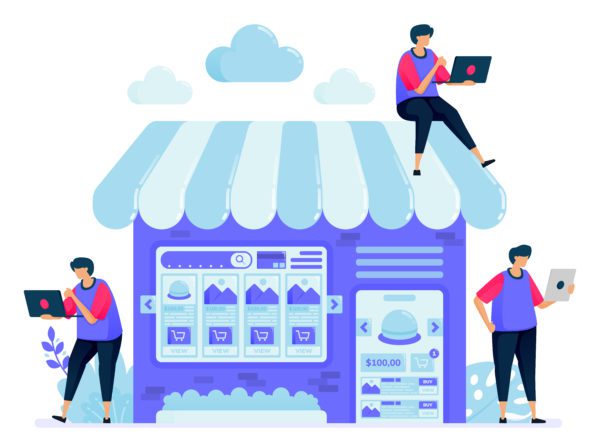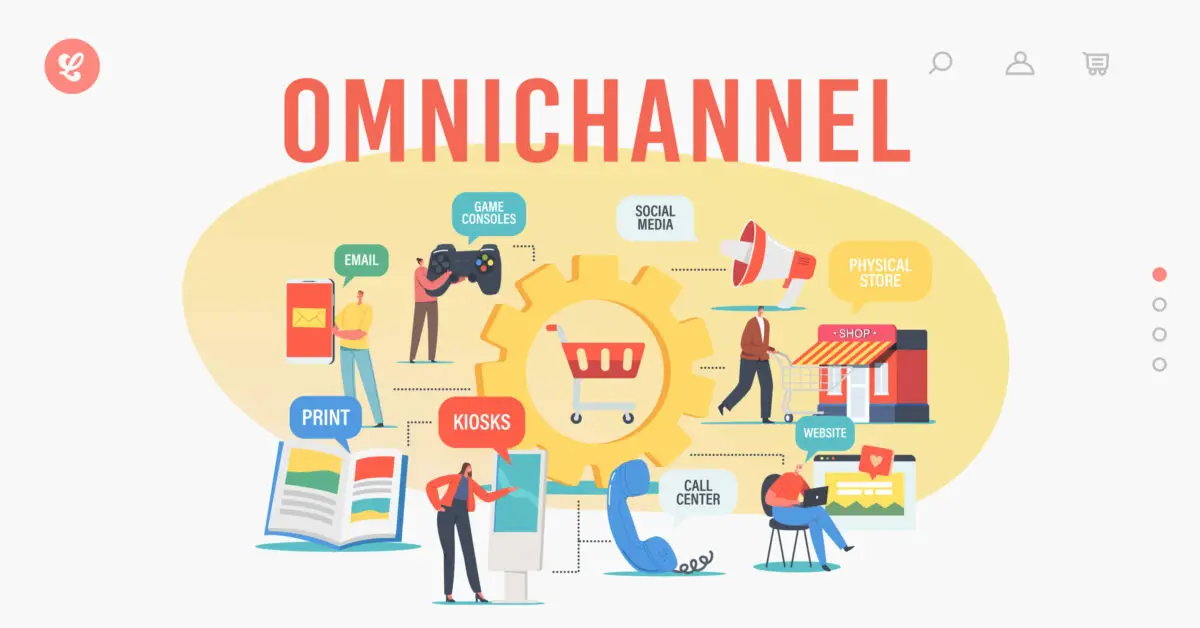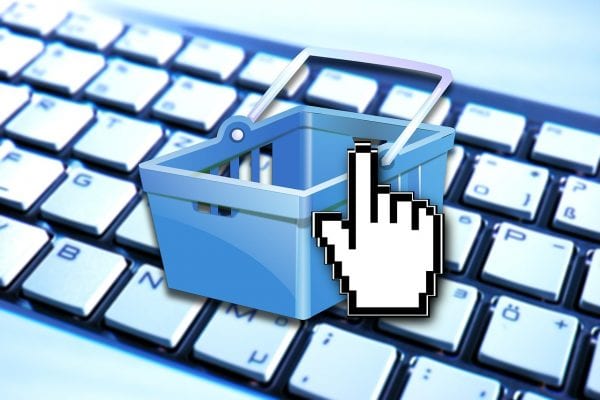When explaining what omnichannel marketing means, a lot of buzzwords get thrown around essentially explaining nothing. In this article, we’re going to take a different route and explain omnichannel marketing as it should always be. This means differentiating omnichannel marketing from multi-channel marketing. And we’re going to tie it all together by discussing the best omnichannel marketing strategies for eCommerce.
Every business has its target audience. Doesn’t matter if you’re an eCommerce business, a retail store or a service provider. You have your target audience. For an eCommerce business, this is even more true.
The need for your omnichannel eCommerce marketing strategy to be automated and result-driven can never be understated. A recent study has shown that omnichannel marketing automation has led to a 250% increase in higher purchase frequency and also increased customer retention by 90%!
Before we discuss this further, let us explain what omnichannel marketing is.
What is Omnichannel Marketing?
Omnichannel marketing, from the name, translates to “all-channel marketing”. This is the type of marketing that meets your ideal customers where they are. Keyword there being ideal. You’re not marketing to just anybody, you’re marketing to users that are interested in your product or service and you’re meeting them where they are.
Doesn’t matter where they are in the customer journey or what platform they’re operating, omnichannel marketing meets them there and creates an experience that is free of hitch.
Omnichannel marketing strategy includes creating your brand’s presence so it spans across platforms, mediums and channels. This means the website, app, email, social media and in some most cases, even extending to offline channels.
While we’re trying to steer clear of buzzwords, one buzzword that’s extremely important to explain omnichannel marketing is “seamless”. Stretching your brand’s presence across so many platforms and mediums can create some inconsistencies whenever users try to interact with your brand. Making sure these inconsistencies are little to inexistent is essential to creating an omnichannel marketing strategy.
Omnichannel vs Multi-channel
At the beginning of this article, we talked about meeting ideal customers where they were. Multi-channel does the exact opposite of this. While omnichannel creates a seamless interaction between your brand and its IDEAL customer, multi-channel marketing is a strategy that’s best described as broad target marketing.
Multi-channel lacks precision and lacks any form of understanding when it comes to understanding the customer’s journey. It’s a marketing strategy that sends the same message through several channels to a large unideal audience, hoping that someone among the audience takes action.
Multi-channel marketing is not an entirely bad idea if you’re just setting up your eCommerce store. This is mainly because multi-channel marketing for eCommerce is helpful for driving sales and customer acquisition especially during the early stages of the business.
As your eCommerce business grows, you become more focused on customer retention than acquisition. This is where omnichannel marketing comes into play. Omnichannel marketing for eCommerce businesses is focused on customer retention and not just acquisition, unlike multi-channel marketing.
Importance of Omnichannel Marketing
The importance of omnichannel marketing for your business cannot be overstated. Here are some omnichannel marketing statistics that best explains this.
- Omnichannel campaigns have a 287% higher purchase rate than single-channel campaigns.
- Omnichannel campaigns that have SMS included in the strategy have a 47% chance to end in a conversion.
- Allows you to segment your campaigns to better serve your diverse audience base.
- Customers who engaged with brands on over 3 platforms purchased 250% more than those who did on one channel.

Best Tips for Building an Omnichannel Marketing Strategy for Ecommerce
After understanding what omnichannel marketing is and its many benefits, it’s time to discuss the best tips for building an effective omnichannel marketing strategy.
Meet Your Customers Where they are
Omnichannel is famous for being available on all platforms and creating a seamless interaction between them. A misconception involved with this is that people assume meeting your customers where they are means being on all channels and platforms.
This would be correct if everyone is your customer. That is wrong. Understanding your business means you know who your ideal customer is and who isn’t. And incorporating an omnichannel for your business means meeting your ideal customers where they are. Hence, create an omnichannel strategy for eCommerce that aligns with your buyer personas.
Segment Your Audience
Meeting your audience where they are is an irrelevant strategy if you’re not segmenting your list.
While you should meet your audience where they are, they’re not all in the same group. Omnichannel marketing strategy for eCommerce has evolved past sending one-size-fits-all messages to everyone in your list and hoping that somehow it speaks to someone in the list and they take action.
This also means sending personalized messages to your list. Segmenting your audience helps you create the right messages that are specifically tailored to suit them and their needs.
How do you segment your list?
- Analyze previous shopping behaviour, i.e., purchases, items in cart, etc.
- By monitoring their engagement and activity. If a customer takes an action on your page or your strategy, this action shouldn’t go to waste. The action should provide information that will help you create a more segmented list.
- You can also segment your list based on profile data and demographic information on your customers.
If a customer purchases something from your store, it would be wise to try to interest them in upselling. This is a clear application of how segmenting your list can make your omnichannel marketing more effective.
Segmenting your list also helps you send more targeted messages to inactive customers. You can split-test email subject lines and offers to see which works best to help you better optimize your campaigns.
Take as much data as you can on your customers, this is because the more data you have, the more effective segments you can create and more results you’ll get.
Your Omnichannel Marketing Strategy Should Consist of Three Channels Minimum
Creating an experience across multiple channels simultaneously translates to better customer retention.
A report at Omnisend showed that campaigns that consisted of at least three channels gained about a 90% customer retention rate. Further research also showed that eCommerce campaigns that utilized a minimum of 3 channels outdid single-channel by over 250%.
Why Choose Omnisend For Your Ecommerce Email Marketing – Our Honest Take
An omnichannel marketing strategy for eCommerce is extremely important because people don’t usually take action the moment they see your ad for the first time. They do sometimes, but the occurrence is so rare that it would be unwise to make that the basis of your campaign.
Do Not Neglect Retargeting
In continuation from the point above, while a customer may not buy from you in the first instance, showing them relevant retargeting ads just might do the trick.
Retargeting also helps your brand become a top-of-mind brand. Such that if a customer needs a product they’ve seen on your ad before, your website is the first place they check for this product. When considering marketing strategies for your eCommerce business, retargeting is a strategy that should not be left out of the list.
Your Content Should Match the Channel
This goes without saying, but your content shouldn’t be the same across platforms. While your omnichannel marketing strategy for eCommerce requires you to be on multiple channels, your content must match the channel.
The reason behind this is that different brands have different audiences. To effectively maximize the results of your omnichannel marketing campaign, your content needs to be tailored to the platform and the audience therein.
Understand what content works best on each channel and tailor your content to these channels.
Make Sure Your Website is Optimized for Mobile
Omnichannel marketing strategy for eCommerce means providing a seamless connection for your customers across various devices, this does not exclude mobile. Making sure your website is mobile-friendly isn’t something you negotiate on.
Research has shown that a whopping 79% of shoppers online buy with their smartphones. That’s an extremely large part of the market you’d be missing out on if you’re not optimized for mobile. Your eCommerce website should provide the same experience for someone that’s shopping with their laptop or their phone.
Optimize Your Customer’s Purchase Experience
One of the most important parts of your eCommerce website is the purchase page. You need to make sure your purchase experience is smooth and the user has no reason to drop off. If your purchase experience presents any hassle, it’s enough reason for a customer to drop off resulting in a loss of sale.
Prioritize Social Media Engagement
Social media networks are essential to effectively maximize your omnichannel marketing strategy for eCommerce. If used the right way it can solve a myriad of problems for your brand. From creating awareness for your brand, answering customer inquiries, etc.
Studies have also shown that brands with strong customer support engagement across channels have an 89% retention rate compared to companies with weak engagement.

Practical Examples of Omnichannel Strategies
Some companies have led the omnichannel marketing charge for years and have achieved staggering success at it. Here’s a list of those companies and how well they’ve done it.
Starbucks
It’s hard to mention omnichannel without mentioning Starbucks. Almost everywhere you go there’s a Starbucks right around the corner. Starbucks has done an excellent job in making its process seamless across multiple channels. Whenever a user pays with a Starbucks card, points are accumulated. Their app takes this up a notch by giving the user access to everything they need. The seamless interaction perfectly expresses what an omnichannel strategy done right is.
Disney
It’s hard to mention omnichannel marketing without mentioning Disney. Everything about Disney seamlessly integrates with one another. Disney is a brand that goes the extra mile to make sure the customer feels a connection.
Everything about Disney is responsive across channels and their products and services work hand in hand to create the most unique omnichannel experience. With the recent addition of the streaming service, Disney has further taken it up a notch.
Sephora
Sephora is another company that does omnichannel marketing brilliantly. Sephora users can access a world of data from any device they choose. From any channel, they experience seamless interactions across multiple services and products.
Conclusion
Omnichannel marketing strategy for eCommerce is the marketing that aims to give the customer the most seamless transition as they interact with your brand. It’s leaving no stone unturned and meeting your ideal customers where they are.
To fully succeed at omnichannel marketing, you need to be a step ahead of your customers. You need to make sure your service gives them the perfect experience leaving no stone unturned.





